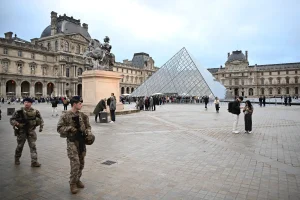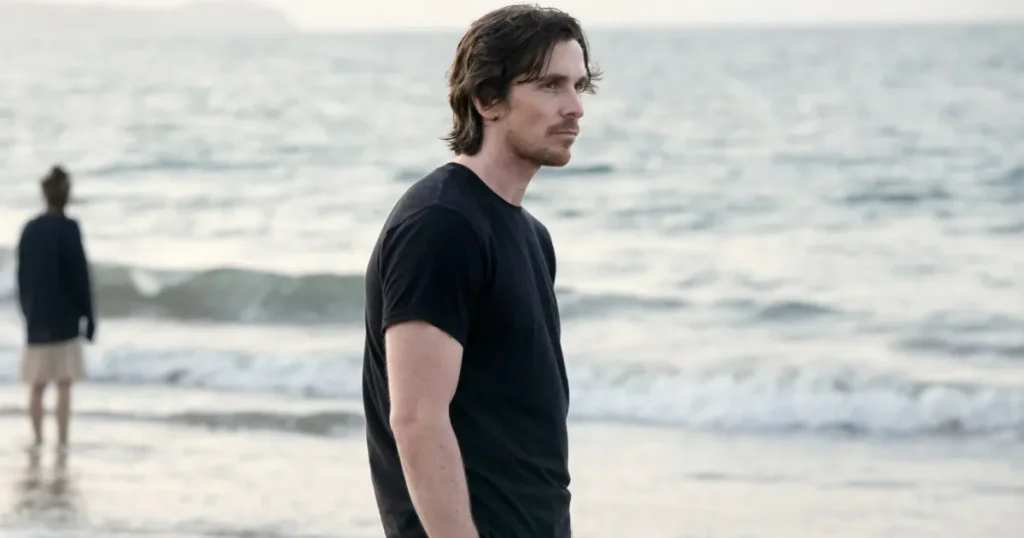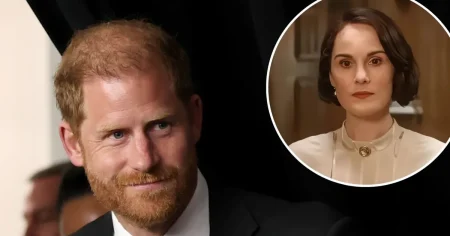The Philosophical Journey of Christian Bale in “Knight of Cups”
In the vast landscape of American cinema, certain filmmakers craft experiences that transcend traditional storytelling, offering viewers a chance to engage with art on a deeper, more contemplative level. Terrence Malick stands among these visionaries, though his reclusive nature means many movie lovers might not recognize his name. In 2015, Malick collaborated with Christian Bale on “Knight of Cups,” a philosophical drama that showcases both men at their artistic peak. Despite flying under the radar for many viewers, this visually stunning film represents one of Bale’s most underappreciated works and deserves attention from anyone seeking cinema that challenges conventional narrative structures while exploring profound existential questions.
The film boasts an impressive ensemble cast that reveals Malick’s standing in the industry – when he calls, Hollywood’s finest answer. Bale stars as Rick, an LA screenwriter drifting through life, searching for meaning amid the spiritual emptiness of his existence. As Rick reflects on his past relationships and navigates his present circumstances, viewers encounter a parade of familiar faces: Natalie Portman, Cate Blanchett, and Antonio Banderas appear alongside numerous other recognizable actors who eagerly joined Malick’s project. This star-studded lineup speaks to the unique opportunity Malick’s rare projects represent for performers seeking challenging, artistically fulfilling work that breaks from standard Hollywood fare. The joy of discovering which celebrated actors appear throughout the film adds an element of surprise that enhances the viewing experience.
At its heart, “Knight of Cups” explores weighty philosophical and spiritual themes through Rick’s existential journey. The film presents a man caught in profound spiritual ennui despite – or perhaps because of – his immersion in Hollywood’s hedonistic culture. Rick’s quest mirrors classical religious pilgrimages, particularly evoking Dante’s journey through various realms of human experience toward potential enlightenment. Malick draws directly from religious texts like “The Pilgrim’s Progress,” weaving Christian allegory throughout the narrative. The film structures itself around tarot imagery, with chapters named after cards from both the Major and Minor Arcana, each loosely representing characters Rick encounters. This thematic richness offers viewers multiple layers of meaning to explore without requiring prior knowledge of these philosophical and religious traditions to appreciate the emotional journey.
Watching a Terrence Malick film demands a different mindset than typical cinematic experiences. Rather than following a traditional three-act structure with clear plot points, viewers must approach “Knight of Cups” as they would a moving painting, poem, or dream. The film unfolds in a stream-of-consciousness style, flowing between Rick’s memories, lived experiences, dreams, and drug-induced states, frequently guided by philosophical voiceovers. This free-flowing structure might initially challenge viewers accustomed to more conventional storytelling, but surrendering to Malick’s rhythms reveals the true power of film as a visual medium capable of communicating beyond narrative constraints. The ten chapters, named primarily after tarot cards, create loose organizational principles that guide the viewer through Rick’s spiritual and emotional journey without imposing rigid storytelling conventions.
While the premise of a disaffected screenwriter searching for meaning amid Hollywood’s moral bankruptcy might sound familiar, Malick’s unique artistic approach transforms this potentially clichéd setup into something genuinely novel. “Knight of Cups” defies easy categorization – it simultaneously functions as a melodrama, soul-searching quest, midlife crisis exploration, romantic drama, confessional, and religious experience. Rick himself exists as both a fully realized character and potentially a reflection of Malick, adding autobiographical dimensions to the work. The film’s refusal to adhere to a single interpretation or follow a predictable arc differentiates it from countless other Hollywood stories about disillusioned writers or the spiritual emptiness of the entertainment industry. By approaching familiar territory with his distinctive artistic vision, Malick creates something that feels entirely fresh despite its recognizable setting and premise.
For those willing to embrace its unconventional nature, “Knight of Cups” offers a cinematic experience that lingers in the mind long after viewing. Malick’s breathtaking visual compositions, coupled with Emmanuel Lubezki’s masterful cinematography, create moments of transcendent beauty amid the spiritual emptiness of Rick’s world. The film invites viewers to contemplate their own quests for meaning and connection in a modern landscape that often prioritizes material success and fleeting pleasures over deeper fulfillment. Christian Bale delivers a remarkably vulnerable performance as a man wrestling with his place in the world, revealing nuances of character through minimal dialogue but profound physical presence. Now available on Netflix, “Knight of Cups” rewards viewers who approach it with openness and patience, offering a meditative exploration of the human condition that stands apart from formulaic mainstream cinema. In a media landscape often defined by predictability, Malick and Bale’s collaboration reminds us of film’s potential as a medium for philosophical inquiry and spiritual contemplation.














